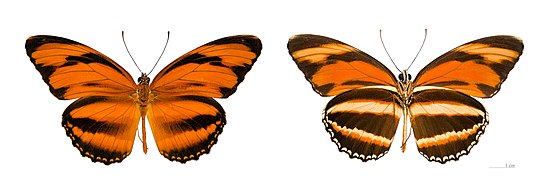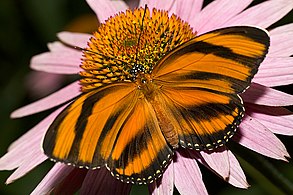|
Dryadula phaetusa
It feeds primarily on the nectar of flowers and on bird droppings; its caterpillar feeds on passion vines including Passiflora tetrastylis. It is generally found in lowland tropical fields and valleys. This species is unpalatable to birds and belongs to the "orange" Müllerian mimicry complex.[1]
SymbiosisPrior to their mating season, males of this species congregate by the hundreds on patches of moist soil that contain mineral salts, a behavior known as mud-puddling. When they cannot find such deposits, the insects visit various animals to drink salty secretions from their skin and nostrils.[2] TaxonomyThe genus Dryadula Michner, 1942, is monotypic; the type species is Papilio phaetusa Linnaeus, 1758 (Syst. Nat. 10 ed., 1: 478). The type locality, given as "Indiis", is supposed to refer to the West Indies or northern South America. References
External links
|
||||||||||||||||||||||||||||||||||



